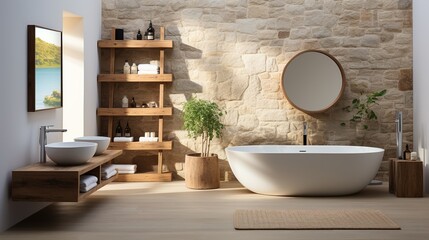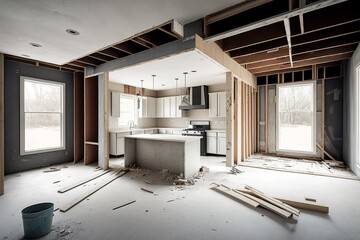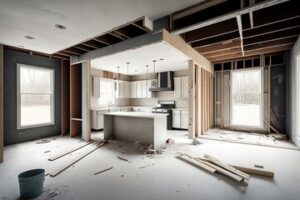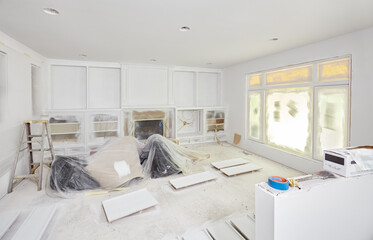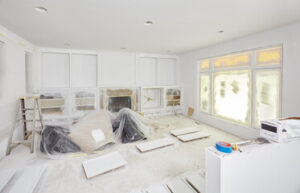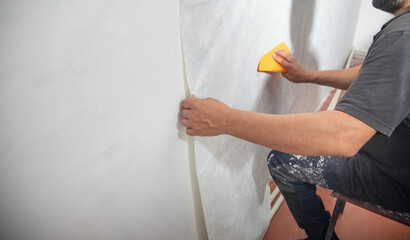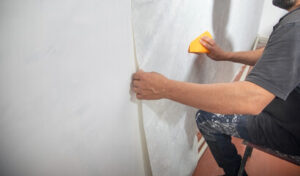Hiring Bathroom Remodeling Contractor Thousand Oaks ensures a smooth and efficient renovation process. A professional contractor brings experience and expertise to the project. They help turn ideas into reality while staying within budget and schedule. Their knowledge ensures that the remodeling process meets high-quality standards.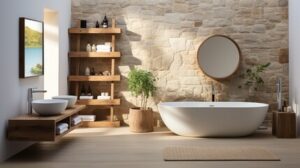
A bathroom remodeling contractor helps with design planning and material selection. They guide clients through various options for flooring, fixtures, and wall treatments. Their advice ensures that the final design aligns with the client’s vision. Proper planning prevents costly mistakes and delays.
Plumbing and electrical work are critical aspects of bathroom remodeling. A professional contractor coordinates with licensed plumbers and electricians to ensure proper installation. This prevents leaks, electrical hazards, and compliance issues. Quality work ensures long-lasting functionality.
Bathroom layout changes require careful structural planning. Expanding the space or relocating fixtures involves modifying walls, floors, and ceilings. A skilled contractor manages these adjustments without compromising structural integrity. This ensures a safe and well-executed design.
Ventilation is essential for preventing mold and moisture damage. A contractor installs exhaust fans and ensures proper airflow to maintain a dry environment. Good ventilation protects fixtures and finishes from damage. It also improves overall air quality.
Waterproofing is a crucial step in bathroom remodeling. Contractors apply moisture barriers and sealants to protect walls and floors from water damage. This prevents mold growth and structural issues over time. Proper waterproofing increases the durability of the remodel.
Tile installation requires precision and expertise. A contractor ensures that tiles are cut and installed correctly to create a seamless finish. They align patterns and use high-quality grout for long-lasting results. Proper tile installation enhances both aesthetics and functionality.
Lighting design plays a significant role in the overall look of a bathroom. A contractor helps select and install appropriate light fixtures for different areas. Task lighting, ambient lighting, and accent lighting create a balanced atmosphere. Proper lighting enhances comfort and visibility.
Storage solutions are essential for maximizing bathroom space. A contractor designs and installs cabinets, shelves, and vanity units tailored to the client’s needs. Efficient storage keeps the bathroom organized and clutter-free. Custom solutions improve functionality and style.
A contractor helps select high-quality fixtures and finishes. Faucets, showerheads, and towel racks must match the overall design and perform well. The contractor ensures proper installation and alignment. Well-chosen fixtures enhance the bathroom’s appearance and usability.
Flooring options vary in durability and maintenance requirements. A contractor recommends suitable materials based on the bathroom’s moisture levels and traffic. Proper installation prevents warping, cracking, and slipping. Quality flooring enhances comfort and safety.
Bathtub and shower installation require structural support and waterproofing. A contractor ensures that the tub or shower fits securely and connects to the plumbing system. Leak prevention and proper drainage are priorities. This ensures long-term durability and performance.
Toilet installation requires careful alignment and sealing. A contractor ensures that the toilet connects properly to the plumbing system. They also verify that it flushes correctly and operates without leaks. Proper installation ensures reliable performance and water efficiency.
Mirror and accessory placement contribute to the bathroom’s functionality and style. A contractor helps determine the best height and positioning for mirrors, towel bars, and hooks. Thoughtful placement enhances convenience and visual balance. Accessories complete the bathroom’s look.
Wall treatments add texture and personality to a bathroom. A contractor helps select moisture-resistant paint, wallpaper, or tiles. Proper installation ensures that the materials withstand humidity and temperature changes. Durable finishes maintain their appearance over time.
Bathroom remodeling contractors handle permits and building codes. They ensure that the project complies with local regulations and safety standards. This prevents legal issues and potential fines. Compliance also guarantees that the remodel meets structural and safety requirements.
Eco-friendly options are becoming increasingly popular in bathroom remodeling. Contractors recommend water-saving fixtures, energy-efficient lighting, and sustainable materials. These choices reduce environmental impact and lower utility costs. Eco-friendly designs improve long-term value.
Space-saving solutions enhance the functionality of small bathrooms. A contractor designs layouts that maximize available space without overcrowding. Wall-mounted fixtures, corner sinks, and recessed shelving create more usable area. Smart design improves comfort and convenience.
Soundproofing improves privacy and comfort in bathrooms. A contractor installs sound-absorbing materials in walls and floors. This reduces noise transmission between rooms. Soundproofing creates a more relaxing bathroom environment.
Accessibility features make bathrooms safer and more comfortable. Contractors install grab bars, walk-in showers, and non-slip flooring. These features enhance safety for people of all ages and mobility levels. Accessible designs improve overall usability.
Color schemes influence the mood and perception of bathroom space. A contractor helps select colors that create a calming or energizing effect. Light colors make small bathrooms feel larger, while darker tones add warmth. Thoughtful color selection enhances the overall ambiance.
Energy-efficient water heaters and heating systems improve comfort and reduce costs. A contractor installs systems that provide consistent hot water and maintain comfortable temperatures. Energy-saving options lower utility bills. Efficient heating improves overall bathroom experience.
Cleaning and maintenance requirements vary depending on the materials used. A contractor recommends finishes and surfaces that resist stains and moisture. Low-maintenance options simplify upkeep and preserve the bathroom’s appearance. Proper material selection enhances long-term durability.
Ceiling design adds depth and character to a bathroom. A contractor recommends materials and finishes that withstand humidity and temperature changes. Adding recessed lighting or decorative moldings enhances the ceiling’s appearance. A well-designed ceiling complements the overall space.
Shower enclosures and doors must be installed securely to prevent leaks and damage. A contractor ensures that glass panels, frames, and seals are properly aligned. This prevents water from escaping onto the floor. Secure installation enhances safety and durability.
Countertop materials impact both style and functionality. A contractor recommends options that resist water, stains, and heat. Proper installation ensures a smooth and level surface. High-quality countertops enhance both visual appeal and practicality.
Ventilation upgrades improve air circulation and moisture control. A contractor installs high-efficiency exhaust fans and ventilation systems. This prevents mold growth and protects finishes. Good airflow maintains a healthier bathroom environment.
Water pressure and drainage issues require expert handling. A contractor assesses the plumbing system and makes necessary adjustments. Ensuring consistent water flow and proper drainage prevents flooding and leaks. Effective plumbing enhances overall functionality.
Decorative accents add personality and charm to a bathroom. A contractor helps select and install elements such as framed mirrors, art pieces, and plants. These touches create a more inviting and personalized space. Thoughtful accents elevate the bathroom’s style.
Bathroom remodeling contractors provide project management and oversight. They coordinate all aspects of the renovation, from demolition to final installation. This ensures that the project stays on schedule and within budget. Professional management reduces stress and ensures quality results.
Technology integration enhances modern bathroom functionality. A contractor installs smart lighting, touchless faucets, and heated floors. These features improve convenience and comfort. Technological upgrades add long-term value to the bathroom.
Water filtration systems improve the quality and taste of water used in the bathroom. A contractor installs filters that remove impurities and chemicals. Clean water enhances skin and hair health. Proper filtration supports overall well-being.
Seasonal maintenance keeps bathrooms in top condition. A contractor recommends regular inspections and minor repairs. Addressing issues early prevents costly damage. Maintenance preserves the bathroom’s appearance and functionality over time.
A bathroom remodeling contractor ensures that every detail meets high standards. Their expertise improves both the visual and functional aspects of the space. Professional installation and design choices enhance long-term value. A well-executed remodel creates a comfortable and stylish bathroom environment.
